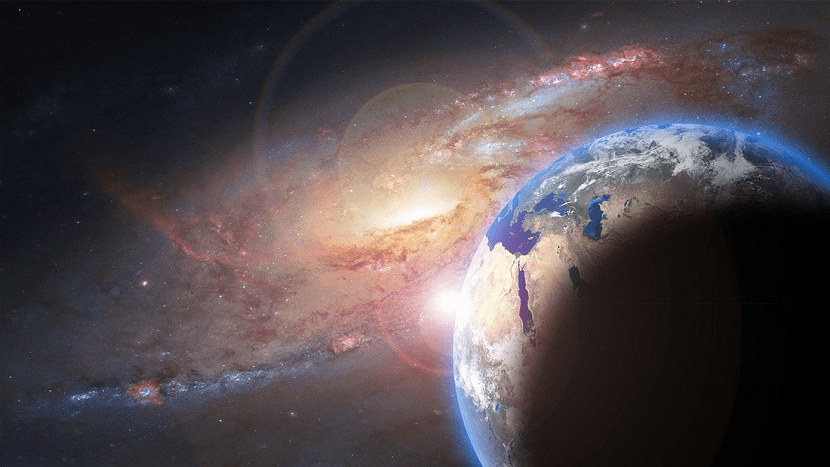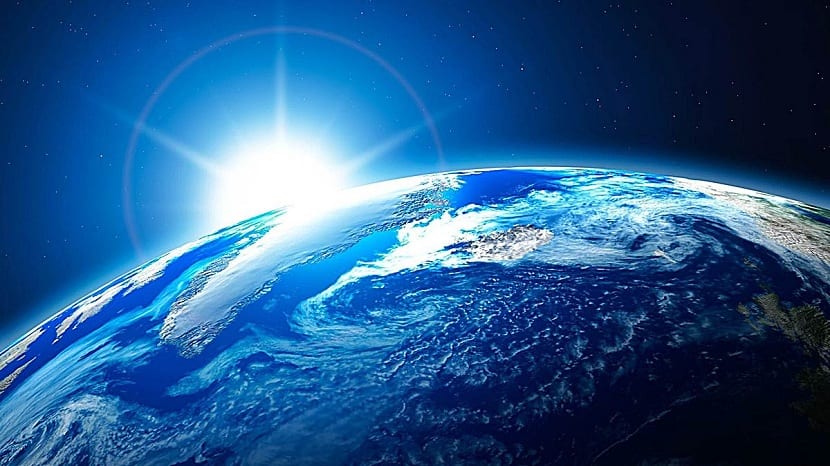
Our planet had a moment when it began to originate and, since then, it has not stopped transforming. As we know, there are different elements that make our planet is in continuous renewal and changes. You may have asked yourself many times how the earth was formed since the beginning. If the origin of everything was the Big Bang, how were the necessary conditions for the formation of a habitable planet to occur?
In this article we are going to detail everything you need to know about how the Earth was formed and what its evolution has been throughout the millions of years that have elapsed until today.
Interstellar dust

First of all, we have to bear in mind that the timescale refers to geological time. That is, the unit of measurement is in thousands or millions of years. For planet Earth, 100 years, which is how long a human in good condition usually lasts, is nothing. It is not even a slight blink for all that has lived. Both for formation and for dynamics and evolution, geological processes must be counted as something very slow and with a time scale different from the human one.
The origin of planet Earth comes from a nebula of the protosolar type. This nebula gave rise to the formation of a planet about 4600 billion years ago. When a planet begins to form, it is nothing more than a large amount of dust with very little density. There was hardly anything, no atmosphere, no life, nothing at all. What has made life on our planet possible is that we are at the perfect distance from the sun. If we were closer, the Sun would end up scorching everything. On the other hand, further away would be like living completely in an ice age.
The gas cloud mentioned above is what caused the dust particles that were roaming the entire solar system to collide. The particles were gradually condensing in what we know today as the Eagle Nebula located in the Milky Way.
The mass of the dust particles gradually condensed and the planet gradually formed.
How the Earth was formed step by step

As Jupiter and Saturn are today, we too were a gigantic volume of gas and dust. As this particle collision developed little by little and its density increased, it became a solid state. This resulted in the Earth's crust and the formation of the rest of the Earth's inner layers. We remember that the earth's core is not completely solid, since it is formed by a solid mass of iron and molten metals.
The rest of the crust was assuming certain dynamics like the one we know today thanks to the theory of plate tectonics. Back then, the entire planet was in chaos in the making. It has always been said that chaos is what gives rise to the formation of stable structures. These times all the volcanoes on Earth had a strong activity. This activity was what caused the emissions so large that there were to form what we know as the Earth's atmosphere. The composition of the atmosphere has never been the same. It has always been modified over time. Currently, at a faster rate than normal, its composition is also changing due to human greenhouse gas emissions.
Volcanoes have also been key elements in the formation of the earth's crust, in addition to thousands of islands, archipelagos, etc.
Formation of the atmosphere

As we can guess, the atmosphere that protects us from the sun's rays, creates the ozone layer and generates the meteorology that we know did not form suddenly. SThere are many gas emissions discharged from the continuous eruptions of all volcanoes. Over thousands of years, the dust emitted by volcanoes consolidated to form a primitive atmosphere.
The concentration and presence of gases has been changing with the development of the planet. To such an extent that today we know the exact concentration of the gases that compose it. The first primitive atmosphere to form was made up of hydrogen and helium. These gases are the most abundant in outer space. On the other hand, in the second phase of the development of the atmosphere we have the meteor shower that hit the Earth. During this meteor shower, volcanic activity was further accentuated.
The gases that have been emitted from volcanic eruptions are known as secondary atmosphere. They are mostly water vapor and carbon dioxide. Volcanoes also emitted large amounts of sulfurous gases, so we had a toxic atmosphere that no person could have survived. When all the gases that were poured into this primitive atmosphere condensed, rain was produced for the first time.
From there, the water began to give life to the first photosynthetic bacteria. Photosynthetic bacteria are the ones that were adding oxygen to the atmosphere so toxic that we had.
With the oxygen that began to dissolve in the seas and oceans, marine life could be engendered. The rest of the evolution and the creation of new species comes from the evolution and genetic crosses that marine life has had. The last stage of formation that the atmosphere had is the one that originated the composition that we currently have of 78% nitrogen and 21% oxygen roughly.
The meteor shower so mentioned by everyone was quite important in the formation of our planet. Thanks to it, the atmosphere could be transformed and the volcanic activity was such that it helped in the formation of islands, archipelagos, more sea floor and to rebuild the atmosphere.
I hope this information helps you to know how the Earth was formed.